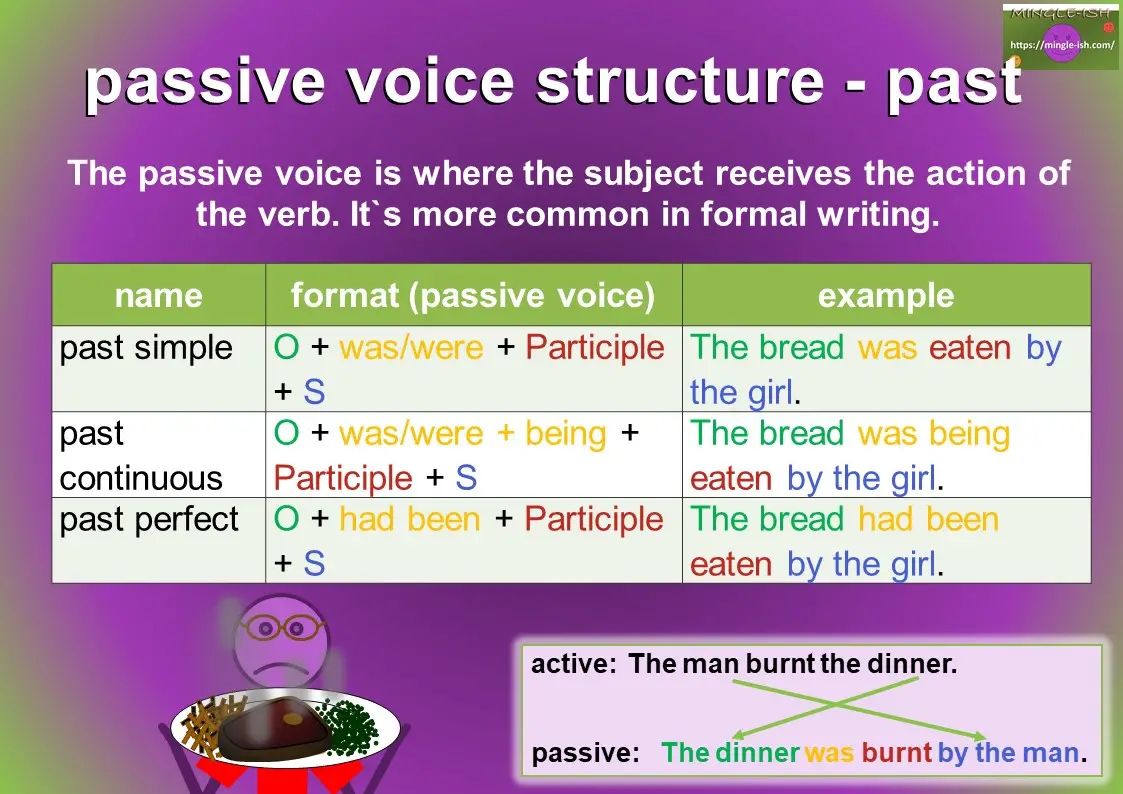In English grammar, passive voice is a construction in which the subject of a sentence is the recipient of the action rather than the doer. This results in a less direct, more formal tone compared to active voice sentences. Passive voice is often used when the doer of the action is unknown, unimportant, or when the focus is on the action itself rather than the doer.
Passive voice can be identified by the use of a form of the auxiliary verb “to be” (such as is, am, are, was, were, has been, have been, had been, will be, will have been) followed by a past participle. For example, “The cake was baked by Mary” is a passive voice construction, whereas “Mary baked the cake” is in active voice.
Using passive voice can be helpful in certain situations, such as when the doer of the action is unknown or when the doer is not the focus of the sentence. However, overuse of passive voice can make writing less clear and engaging, so it is important to use it judiciously.
Passive voice is often used in scientific or academic writing to create an objective, formal tone. It can also be used in situations where the doer of the action is irrelevant or when the speaker wants to avoid assigning blame or responsibility. Overall, passive voice is a useful tool in a writer’s toolkit, but it should be used with care.
It is important for writers to be aware of when they are using passive voice and to consider whether it is the most effective choice for their writing. By understanding the definition and characteristics of passive voice, writers can make informed decisions about when to use it and when to opt for active voice instead.
In conclusion, passive voice is a grammatical construction in which the subject of a sentence is the recipient of the action rather than the doer. It is characterized by the use of a form of the auxiliary verb “to be” followed by a past participle. While passive voice has its uses in certain contexts, it is important for writers to use it judiciously and consider whether active voice might be a better choice for clarity and engagement.
